

How many christian denominations worldwide? I was asked recently how many christian denominations there are worldwide.
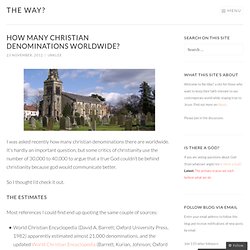
It’s hardly an important question, but some critics of christianity use the number of 30,000 to 40,000 to argue that a true God couldn’t be behind christianity because god would communicate better. So I thought I’d check it out. ELTA - exmisa. ELTA (autointitulată Elta Universitate) este o sectă spirituală condusă de Ion Dumitrescu.
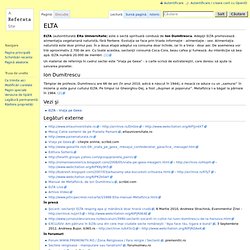
Adepţii ELTA promovează alimentaţia vegetariană naturistă, fără fierbere. Evoluţia se face prin triada informaţie - alimentaţie - sex. Alimentaţia naturistă este doar primul pas. În a doua etapă adeptul va consuma doar lichide, iar în a treia - doar aer. De asemenea vor trăi aproximativ 2.700 de ani. Un material de referinţă în cadrul sectei este "Viaţa pe Geea" - o carte scrisă de extratereştri, care doresc să ajute la salvarea planetei.
Ion Dumitrescu Tâmplar de profesie, Dumitrescu are 66 de ani (în anul 2010, adică e născut în 1944), o moacă ce aduce cu un „samurai” în mizerie şi este gurul cultului ELTA. Vezi şi ELTA - Viaţa pe Geea.
Information on SDA Prophet Ellen G. White, including books, articles and letters. Mun (religion) Mun (also called Munism or Bongthingism) is the traditional polytheistic, animist, shamanistic, and syncretic religion of the Lepcha people.
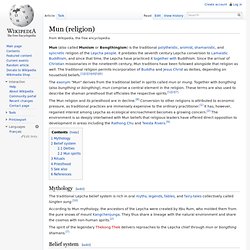
It predates the seventh century Lepcha conversion to Lamaistic Buddhism, and since that time, the Lepcha have practiced it together with Buddhism. Since the arrival of Christian missionaries in the nineteenth century, Mun traditions have been followed alongside that religion as well. The traditional religion permits incorporation of Buddha and Jesus Christ as deities, depending on household beliefs.[1][2][3][4][5][6] Subud. Subud (pronounced [ˈsʊbʊd]) is an international spiritual movement that began in Indonesia in the 1920s, founded by Muhammad Subuh Sumohadiwidjojo.

[note 1] The basis of Subud is a spiritual exercise commonly referred to as the latihan kejiwaan, which was said by Muhammad Subuh to represent guidance from "the Power of God" or "the Great Life Force". He claimed that Subud was not a new teaching or religion. He recommended that Subud members practise a religion but left them to make their own choice of religion. Some members have converted to Islam, but others have found their faith in and practice of Christianity, Islam and Judaism, for example, have deepened after practising the latihan.[1] There are now Subud groups in about 83 countries, with a worldwide membership of about 10,000.[2] Etymology[edit]
Pandeism. Pandeism (or pan-deism) is a theological doctrine which combines aspects of pantheism and deism.[1] It holds that the creator of the universe actually became the universe, and so ceased to exist as a separate and conscious entity.[2][3][4][5] Pandeism is proposed to explain, as it relates to deism, why God would create a universe and then abandon it,[6] and as to pantheism, the origin and purpose of the universe.[6][7] A pantheistic form of deism[edit] Pandeism falls within the traditional hierarchy of nontheistic philosophies addressing the nature of God.[9] For the history of the root words, pantheism and deism, see the overview of deism section, and history of pantheism section.
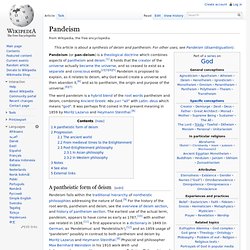
Progression[edit] The ancient world[edit] Ásatrúarfélagið. The organization was led by farmer and poet Sveinbjörn Beinteinsson from 1972 until his death in 1993.
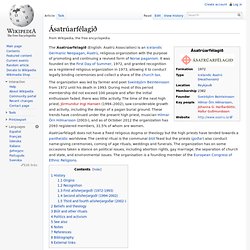
During most of this period membership did not exceed 100 people and after the initial enthusiasm faded, there was little activity. The time of the next high priest, Jörmundur Ingi Hansen (1994–2002), saw considerable growth and activity, including the design of a pagan burial ground. Goddess movement. One version of the Spiral Goddess symbol of modern neopaganism The Goddess movement is an overall trend in religious or spiritual beliefs or practices which emerged from second-wave feminism, predominantly in North America, Western Europe, Australia and New Zealand in the 1970s.
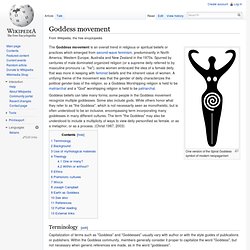
Spurred by centuries of male dominated organized religion (or a supreme deity referred to by masculine pronouns i.e. "he"), some women embraced the idea of a female deity that was more in keeping with feminist beliefs and the inherent value of women. A unifying theme of the movement was that the gender of deity characterizes the political gender-bias of the religion, so a Goddess Worshipping religion is held to be matriarchal and a "God" worshipping religion is held to be patriarchal.
Goddess beliefs can take many forms; some people in the Goddess movement recognize multiple goddesses. Terminology[edit] The Goddess or the Great Goddess is a female deity that is regarded as primary. Background[edit] Theology[edit] Kevin R. D. Shepherd - Cults and suspect parties, plus FAIR and INFORM. 24.
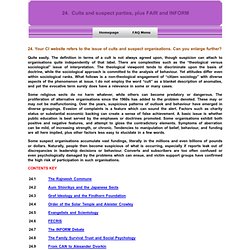
Your CI website refers to the issue of cults and suspect organisations. Can you enlarge further? Quite easily. The definition in terms of a cult is not always agreed upon, though suspicion can attach to organisations quite independently of that label. There are complexities such as the “theological versus sociological” issue of interpretation.
Some religious sects do no harm whatever, while others can become predatory or dangerous.